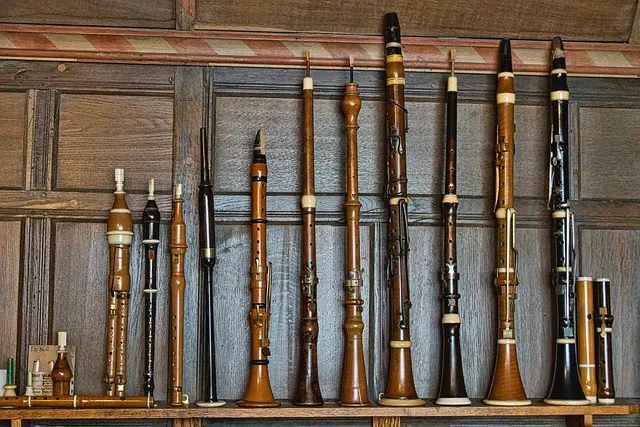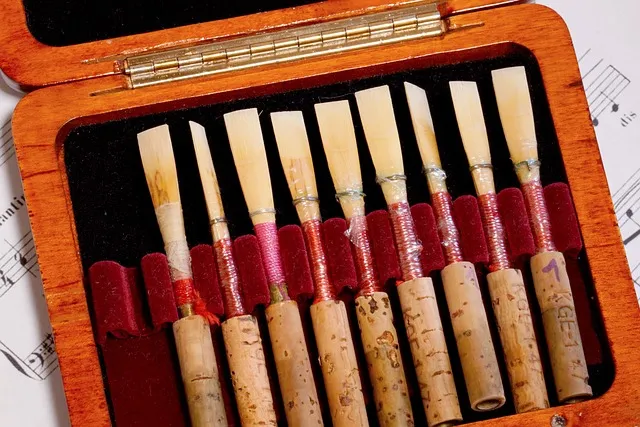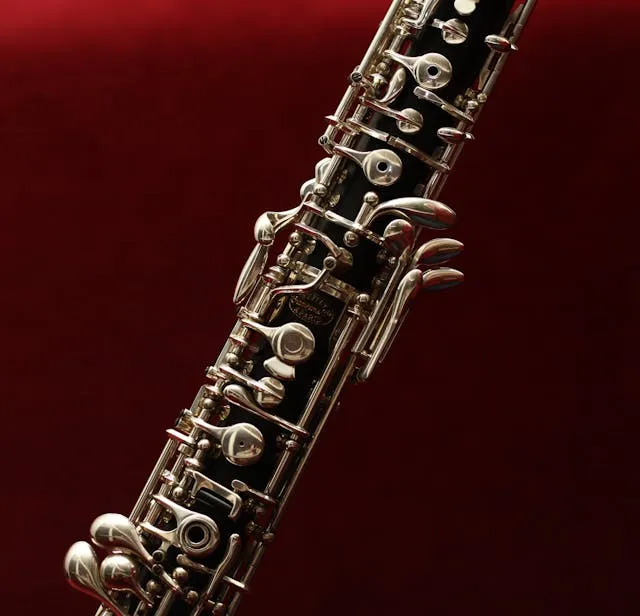Greetings to all my dear Rising Star friends, today I am very happy to share with you a new article on my blog. I want to tell you some interesting facts about a very interesting instrument, I am referring to the Oboe. And, as usual, at the end of the post I will present you some fan art that I have created, inspired by our beloved game, Rising Star. Without further ado, let's begin.

Source: Canva
The oboe is an instrument that has accompanied music through the centuries, but it has taken many years to get to where we are today, or as they say, it has rained a lot 😀. As far as we know, this instrument has its roots in the creativity of French musicians.
The innovators. Frédérick Triébert and Apollon Marie-Rose Barret are names that many will recognize if they play this instrument, as they were responsible for many of the advances in the design of the instrument, while Barret popularized new techniques and keys that made the oboe easier to play. Of course there is much more history behind it, but if I wanted to tell it all I would need more than one article haha😀.
- One of the most curious elements of the oboe are the reeds. In the 18th century, reeds were an art, as they were wound with sheets of metal and held together with other materials. The first known reeds date back to around 1770, and were quite different from modern reeds, shorter and less elaborate.
Then in the 19th century, during the Romantic era, it began to evolve. Additional keys were introduced to improve intonation and make playing easier. Suddenly, an eight-key oboe was no longer enough, and makers set to work creating ever more sophisticated instruments.
- In the 20th century (in case you don't know, that's the past century), François Lorée and his son Lucien Lorée perfected the classical oboe. With the help of Georges Gillet, they developed the cymbal system, which made trills and fast passages much easier to play. Today, Lorée oboes are considered some of the best in the world. And of course, they're not cheap.
Did you know that there's a type of oboe called the "Viennese oboe"? It's a variant that's still used in Austria and has a distinct sound, ideal for integration into wind ensembles. And then there is the thumbplate system, invented by Apollon Barret, which allows certain notes to be played with the thumb, a technique still popular in England.
Did you know that the English word "oboe" is an adaptation of the French word "hautbois"? This French term is broken down into "haut," meaning "high," and "bois," meaning "wood." Thus, the name highlights both the instrument's high, clear tone and its wooden construction.
Jack Cozen Harel is known for being the fastest oboist in the world, according to the Guinness Book of Records. In an impressive display of skill, he played Nicolai Rimsky-Korsakov's "Flight of the Bumblebee" in just 26.1 seconds, which is equivalent to 409 notes, or more than 15 notes per second.
Well, my dear friends, these were the curiosities I wanted to tell you about the Oboe today. I hope you liked them and above all that you learned something new.
Rising Star Fan Art
Now, changing the subject, I present my post #65 about some of the fan art I've made with the help of DALL-E, inspired by our beloved game, Rising Star. In this post, I've used the card theme again along with several elements of the game. For example, I've added the star, some instruments and singers to give more personality to the images. Some of the images also have futuristic and retro touches, and I've added stages and concerts to give it a special touch.
The images are free to use, so you can use them from this post without any problem. I reiterate that they have been made by me with the help of DALL-E.
I hope you enjoyed this journey through the history and curiosities of the Oboe. And that you liked the fan art. See you in a new post. Until next time friends, greetings to all.









